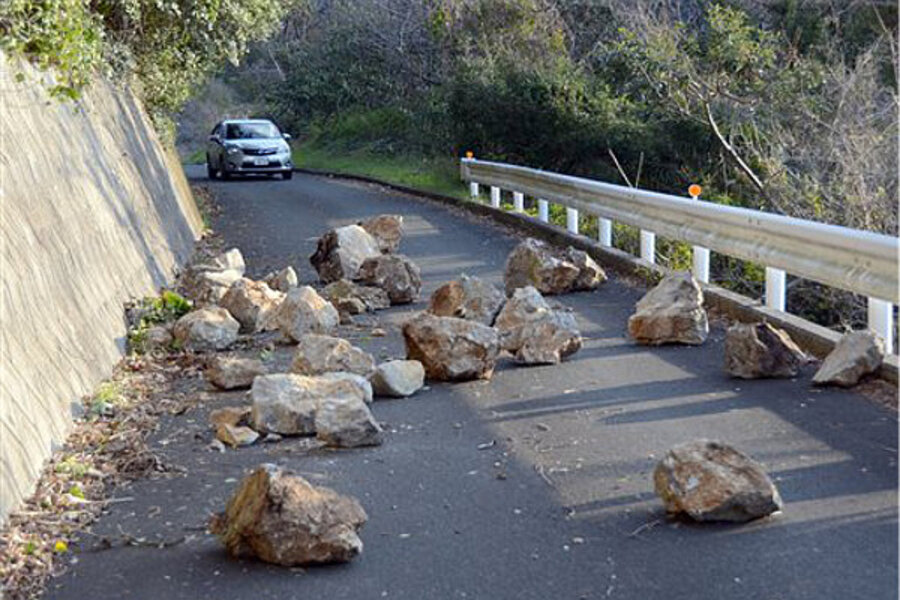Japan earthquake: Overnight quake shakes western Japan
Loading...
| TOKYO
An overnight earthquake has caused minor injuries and scattered damage in southwestern Japan and delayed trains Friday morning.
The 2:06 a.m. quake had a magnitude of 6.3 according to the US Geological Survey. It struck offshore in the Inland Sea between three of Japan's four main islands and nearest to the northern coast of the island of Kyushu. It was also felt on nearby parts of Honshu and Shikoku islands.
Japanese media tallied at least 18 injuries, including people who were knocked out of their beds. The quake burst some water pipes, but didn't appear to cause any significant damage. Japanese television showed roped-off debris that had fallen from the facade of one building.
Copyright 2014 The Associated Press. All rights reserved. This material may not be published, broadcast, rewritten or redistributed.







